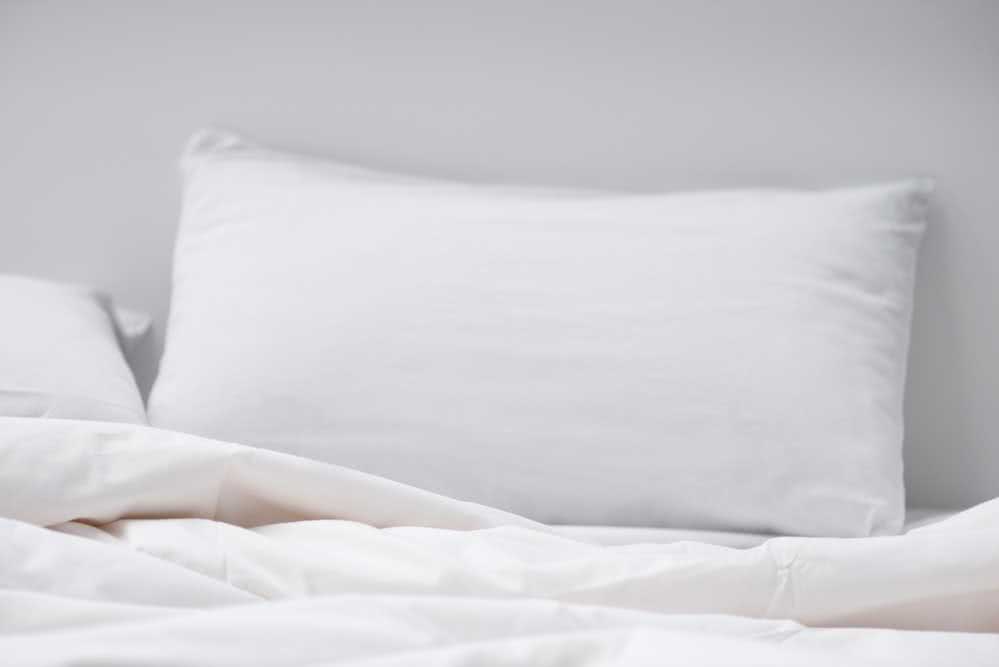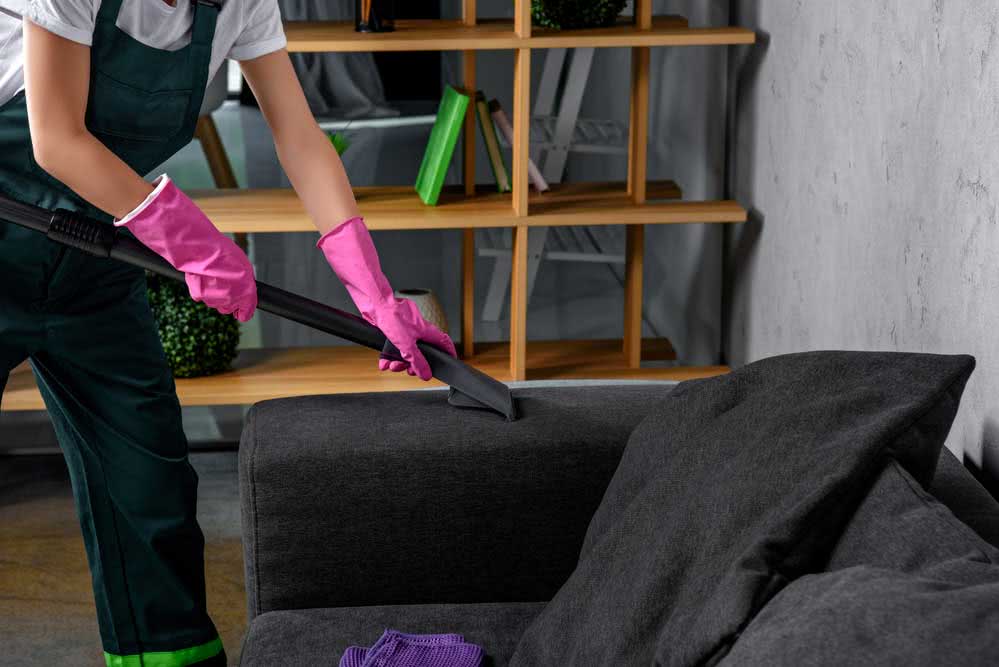Dust mites are a common problem in all homes. These small animals are associated with several allergic symptoms that affect the health and quality of life of many people. Coughing, sneezing, itching, stuffy nose, all of these symptoms can be related to the presence of mites in the environment.
For people who suffer from asthma and allergic rhinitis, dust mites are even more harmful. Knowing how to minimize the effects of these animals in the home is not just a matter of cleaning, some measures must be taken specifically to combat mites.
Do you know what to do to prevent mites from harming your health and quality of life? Be sure to check out this article to learn all the necessary measures and valuable information on how to eliminate dust mites from your home!
What are mites? Learn more about these microscopic animals and learn how to avoid them!

It may seem strange that mites are considered animals and not insects, but they are! According to the criteria defined by the rules of biology, mites fit into the class of arachnids, which are animals. These small animals in the phylum of arthropods measure between 0.2 and 0.33 millimeters. Thus, it is only possible to see them with the help of a microscope.
Because we are unable to visualize the mites, we often do not imagine that they are there! However, it is important to know that they are found on mattresses, sofas, pillows, cushions, rugs and curtains from any location. As they are very small, the spread of mites through the air occurs very easily and that is why their presence in the environments causes so many respiratory problems.
Mites have a similar appearance to ticks, but are smaller. There is an estimate that only 1 square meter can hold up to 100 thousand mites! They reproduce at an enormous speed and are concentrated in humid environments, surviving inside upholstery and various fabrics.
These animals feed on residues from the peeling of human or animal skin, which is why they prefer to inhabit mattresses and pillows.
What are the existing types of mites?
There is a huge diversity of species of mites, each one lives in a different habitat and behaves in a way. Scientists estimate that there are more than 50,000 species of this arachnid!
However, we highlight here the most common species of mites and which are most relevant to human health. Check it out below!
- Dermatophagoides farinae: this species of mites is the most responsible for causing asthma and dermatitis, very common diseases in our environment. Mites of this species live on bedding, pillows, mattresses, plush, carpets and curtains.
- Dermatophagoides pteronyssinus: similarly to the previous species, these mites inhabit upholstery and bedding and can also cause respiratory diseases and skin diseases.
- Sarcoptes scabiei: females of this species of mites are responsible for causing scabies in humans and scabies in animals. Both are skin diseases.
What are the main damages that mites bring to human health?
How do you know that dust mites are causing harm to your health, if you can’t see them to identify their presence? Well, it’s safe to say that every environment contains dust mites. As clean as a location is, it is impossible to eliminate the presence of these animals completely.
However, mites only cause symptoms when they are present in large quantities. Therefore, the best way to avoid damage is to take the periodic preventive measures against mites that we will teach you later in this article.
Mites are harmful to human health, as they have the ability to stimulate an allergic response in our body. When microscopic animals come into contact with the nasal, oral, eyes or skin cavities, they stimulate the release of substances characteristic of allergy reactions.
Thus, contact with mites causes classic symptoms such as sneezing, runny nose, itching, coughing and allergic dermatitis, which is the manifestation of skin allergy.
The most common diseases triggered by contact with mites are:
- Allergic asthma: asthma is a disease that affects the lung and its main symptoms are coughing, difficulty breathing and a wheezing lung. When triggered by contact with mites, the inflammatory process of asthma is caused by the allergic response that these animals induce in the body.
- Rhinitis: allergic rhinitis is characterized by nasal itching, sneezing, runny nose and nasal obstruction and eye irritation. These symptoms compromise a person’s quality of life as they make breathing much more difficult. Mites, by inducing the release of allergic substances, further worsen the condition of rhinitis.
- Conjunctivitis: this disease affects the eyes and causes swelling in the eyelids, itchy eyes, burning sensation and sensitivity to light. In addition, the eyes are red and sensitive.
- Atopic dermatitis: itching, lesions and redness of the skin are typical symptoms of dermatitis. The word “atopic” is related to the allergic component of this disease.
- Scabies: this disease is caused by the females of the mite species that we saw earlier: Sarcoptes scabiei. In this disease, the eggs laid by the mites induce severe itching and skin lesions. Although this species of mite causes mange in animals, this disease is not transmitted to humans! Our contagion is done through contact with other humans and objects contaminated by them.
How to end the mites?

In order for you to avoid the harmful effects of mites on your health and your family as much as possible, we have separated some very effective tips on how to significantly reduce the number of these small arachnids. Basically, the tips revolve around optimizing cleaning and taking special care with upholstery. Check it out below!
1. How to get rid of dust mites in the room?
The main tip to stay free of the unpleasant symptoms caused by the mites present in the mattresses, bedding, pillows, carpets and curtains of the rooms is the washing and regular exchange of these items.
It is recommended that you change your pillow at least every 2 years. Thus, it prevents the proliferation of mites to a very high level. Never put the pillow to wash, as moisture will be trapped inside and will increase the chance of mites to reproduce even faster.
Vacuum the mattress regularly and always try to put it in the sun with the pillow. Moisture reduction is excellent for preventing mites. Avoid eating in bed, any dirt can serve as food for dust mites.
Change bedding frequently, ideally you wash sheets and pillowcases at least once a week. The same goes for carpets and curtains! The washing frequency may be less for the latter, but it is important to wash them.
An interesting tip is to use anti-mite covers on mattresses and pillows. Pay attention, too, to the plushies present in the children’s room. It may seem strange, but an excellent way to get rid of arachnids in stuffed animals is to put them in a plastic bag and then leave them in the freezer for 8 hours.
2. How to get rid of dust mites in the room?
Always try to vacuum the dust off the floor, the living room sofas and the living room cushions. If you have rugs and curtains, wash everything regularly.
If possible, place sofa cushions and upholstery in the sun frequently. Thus, you reduce humidity and prevent mites from finding their favorite environment in which to live. Another very effective tip is to carry out waterproofing and cleaning treatments on the sofas. These measures help a lot to reduce the mite load on these items that cannot be washed.
3. How to eliminate dust mites in the kitchen and bathroom?
In these two rooms, the main sources of mite are towels and washcloths. Change bath towels every three uses and never leave them lying around. Ideally, you should extend the towels in a light and airy place after each use.
Tablecloths and tea towels should be washed weekly to avoid the excessive proliferation of mites. Another fundamental measure is to change the sink sponge once a week, it is a very favorable environment for the proliferation of these animals.
4. How to eliminate dust mites on Christmas ornaments?
With the arrival of Christmas, we must be very careful when decorating our house. The reason? The closed boxes full of ornaments mite and spend the whole year stocked in some forgotten corner of our houses.
So, to prevent Christmas ornaments from causing allergies and uncomfortable symptoms in the residents of your home, clean them all before decorating the house for Christmas! Place in the sun those items that cannot be washed or cleaned.
Now you know the main measures to end the mites! Leave in the comments doubts and suggestions of other cleaning habits against mites that you have in your home!



